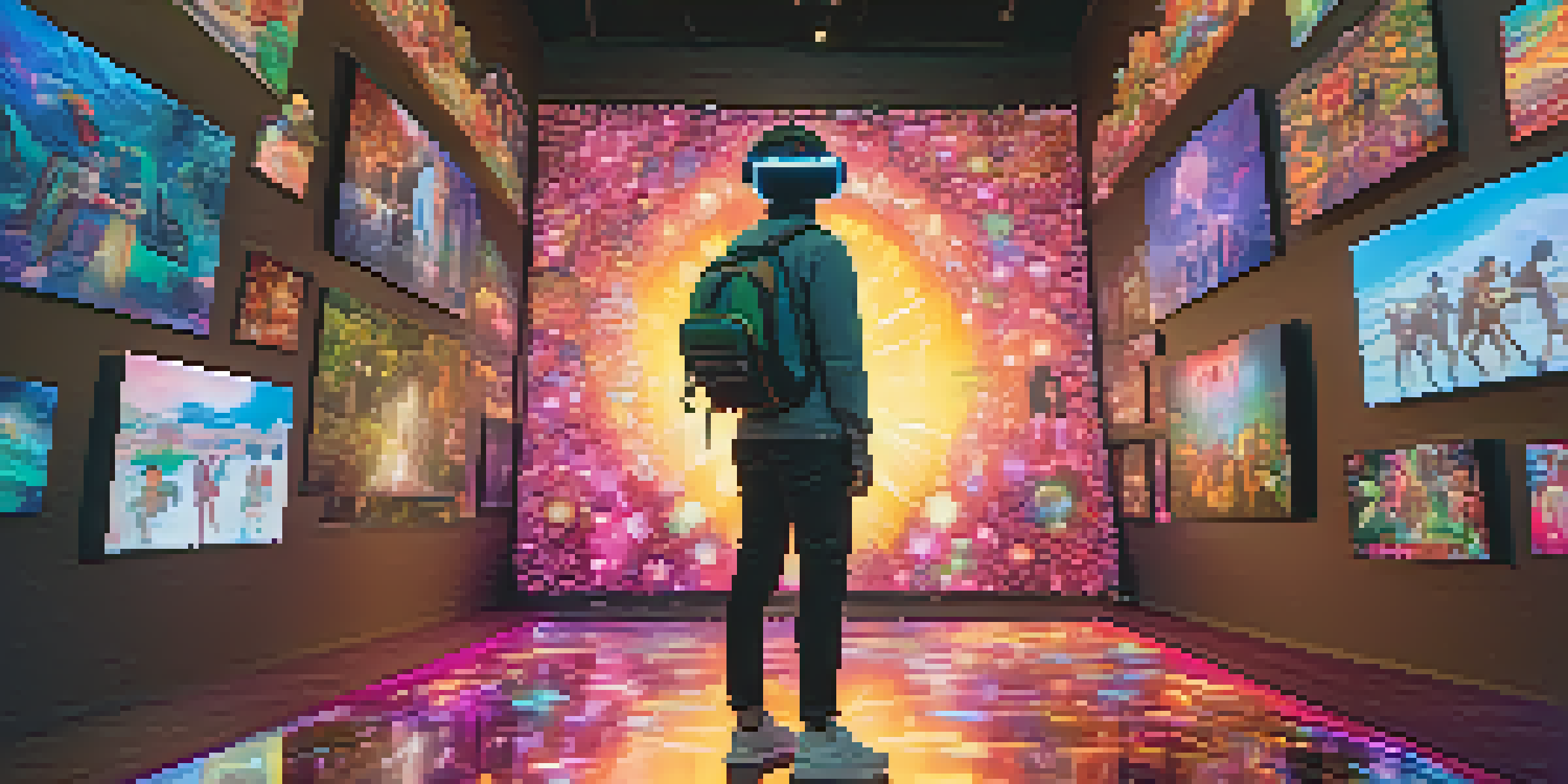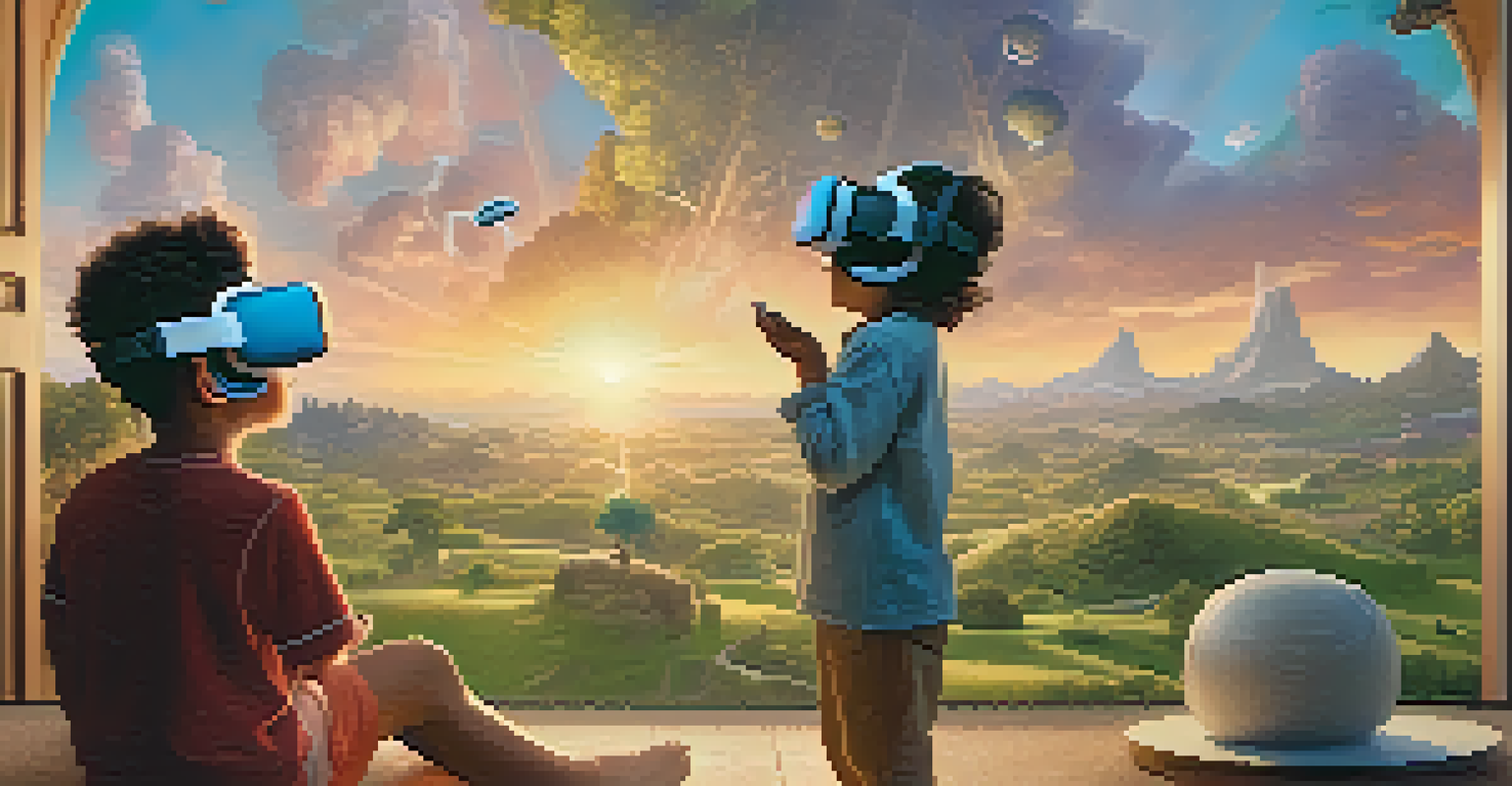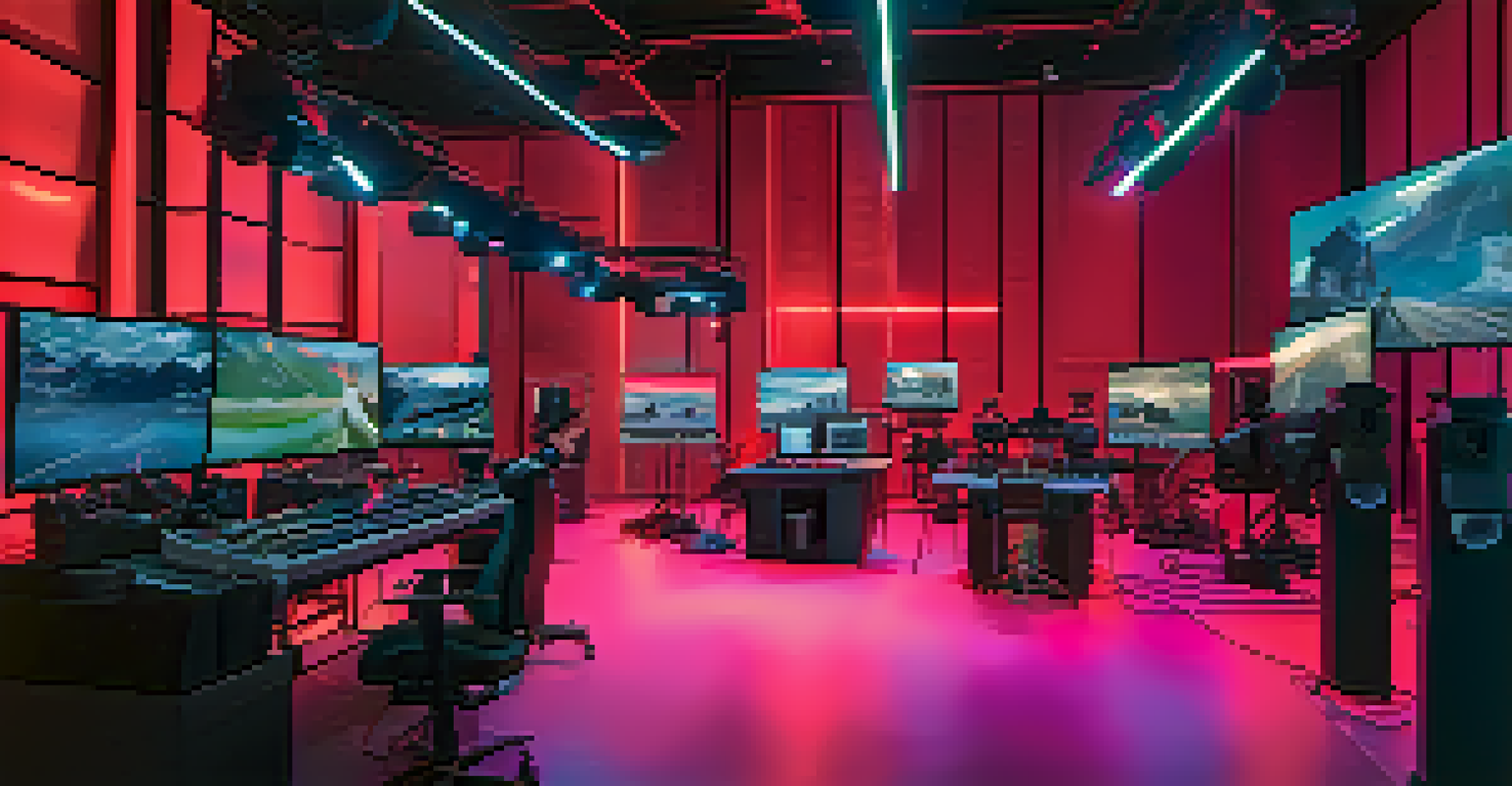Virtual Reality: The Future of Immersive Storytelling in Film

What is Virtual Reality and How Does it Work?
Virtual Reality (VR) is a technology that creates a simulated environment, allowing users to interact with a 3D space as if they were actually there. With VR headsets and motion sensors, viewers can immerse themselves in a world crafted by storytellers, changing how narratives unfold. Think of it as stepping into a book or movie, where you’re not just an observer, but an active participant.
Virtual reality is the first step in a grand adventure into the landscape of the imagination.
This technology works by combining hardware, such as VR headsets equipped with screens and audio capabilities, with software designed to create realistic environments. By tracking your head and hand movements, VR adjusts the visuals in real time, enhancing the sense of presence. Imagine walking through a historical scene, where every detail is designed to pull you deeper into the story.
As VR continues to evolve, its applications in film and storytelling are becoming more sophisticated. Filmmakers can now craft experiences that adapt based on viewer choices, allowing for multiple narrative paths. This level of engagement is something traditional media simply can’t offer.
How VR Enhances Emotional Connection in Storytelling
One of the most compelling aspects of virtual reality is its ability to forge emotional connections between viewers and characters. When you feel like you’re part of the action, your emotional responses can be heightened, leading to a more impactful storytelling experience. For instance, imagine experiencing a character's journey from their perspective, feeling their fears and triumphs firsthand.

An example of this emotional engagement can be seen in VR experiences that place you in the shoes of a character facing significant challenges. By simulating their thoughts and feelings, VR allows you to empathize on a deeper level. This kind of emotional immersion can lead to lasting impressions that stay with viewers long after the experience ends.
VR Transforms Storytelling Experience
Virtual reality allows viewers to actively participate in narratives, creating a more immersive and engaging storytelling experience.
Furthermore, when audiences can interact with the narrative, it transforms passive viewing into an active experience. This shift not only enriches storytelling but also encourages viewers to think critically about the choices characters make, deepening their emotional investment in the story.
The Role of Interactivity in VR Film Experiences
Interactivity is a hallmark of virtual reality that sets it apart from traditional filmmaking. In VR, viewers are not just watching a story unfold; they can influence the plot through their actions and decisions. This participatory aspect allows for a more personalized experience, where every viewer's journey can be uniquely different.
The only limit to our realization of tomorrow will be our doubts of today.
For instance, VR films like 'The Invisible Man' have allowed audiences to choose different perspectives, leading to varied interpretations of the story. This interactivity invites viewers to explore themes and character arcs in ways that a linear film cannot. It creates a dynamic relationship between the audience and the narrative.
As filmmakers embrace this interactivity, the potential for storytelling expands dramatically. Creators can experiment with branching narratives, where decisions lead to different outcomes, making every viewing an adventure. This innovation opens up new avenues for exploration in how stories are told and experienced.
Challenges Facing VR in the Film Industry
Despite its exciting potential, virtual reality in the film industry faces several challenges. One major hurdle is the cost associated with VR production, which can be significantly higher than traditional filmmaking. From specialized equipment to the need for skilled VR developers, the financial investment can be daunting for many creators.
Additionally, there’s the challenge of accessibility. Not everyone has access to high-quality VR headsets or the technical know-how to navigate these experiences. This limitation can restrict audience reach, making it difficult for VR films to gain the same traction as conventional films.
Emotional Connections Through VR
By placing audiences in the shoes of characters, VR enhances emotional engagement, making stories more impactful.
Moreover, the storytelling format is still evolving, and many filmmakers are experimenting to find the best ways to engage viewers. The transition from passive to active storytelling can be jarring for some audiences, who may prefer the comfort of traditional films. As the medium matures, filmmakers will need to find ways to bridge this gap.
Examples of Successful VR Storytelling in Film
Several pioneering projects have successfully showcased the power of VR in storytelling. One notable example is 'Wolves in the Walls,' an immersive experience that blends animation with interactive elements, allowing viewers to explore a child's imagination while unraveling a haunting tale. This project highlights how VR can create rich, layered narratives that captivate audiences.
Another inspiring example is 'The Lion King: Virtual Reality Experience,' which invites fans to step into the world of the beloved film. Through interactive storytelling, viewers can engage with characters and settings, making choices that influence their experience. Such projects demonstrate the potential for creativity that VR brings to film.
These successful examples not only entertain but also push the boundaries of what storytelling can achieve. They inspire filmmakers to think outside the box and experiment with how narratives can be constructed in virtual spaces.
The Future of VR in Film and Storytelling
The future of virtual reality in film is brimming with possibilities. As technology advances, we can expect more refined experiences that blur the line between storytelling and reality. This evolution could lead to fully immersive worlds that feel as real as our own, where audiences can interact with characters and environments in unprecedented ways.
Moreover, as VR becomes more accessible, we might see an increase in mainstream adoption among filmmakers and audiences alike. Imagine a future where VR films are as commonplace as traditional cinema, allowing everyone to explore diverse narratives from the comfort of their homes. This shift could democratize storytelling, giving a voice to diverse perspectives.
Interactivity Redefines Film Viewing
The interactivity in VR films enables viewers to influence the plot, leading to personalized and varied storytelling experiences.
With the rise of platforms dedicated to VR content, we are on the cusp of a storytelling revolution. As creators continue to innovate and explore the potential of this medium, the possibilities are truly limitless, paving the way for a new era of immersive storytelling.
Conclusion: Embracing the Future of Storytelling
In conclusion, virtual reality is not just a trend; it's a transformative force in the world of storytelling. By immersing audiences in rich, interactive narratives, VR opens up new dimensions of emotional connection and engagement. As we embrace this technology, we can look forward to a future where stories are more than just seen—they're experienced.
The journey of integrating VR into film is just beginning, and while challenges remain, the potential rewards are immense. Filmmakers have the opportunity to redefine how stories are told and experienced, creating memorable moments that resonate with audiences on a personal level. This evolution encourages creativity and innovation in storytelling.

As we step into this exciting future, let’s celebrate the filmmakers who dare to dream and push the boundaries of what’s possible. Virtual reality promises a new chapter in storytelling, inviting us all to explore, engage, and connect in ways we never thought possible.